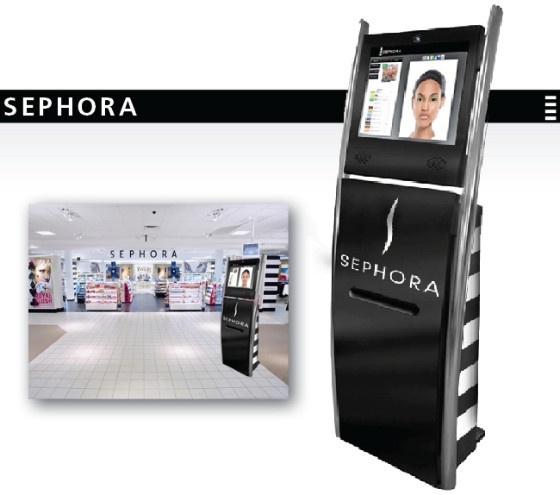Languages
Contact
CONTACT - 0049 9133 7770-800

Dominik Brokelmann, CEO
I am regularly in the US, where I have naturally also been keeping a close eye on the latest trends in brick and mortar retailers. It wouldn’t be the first time that something can be learnt from the Americans, as I’m sure you’ll agree. I noticed a kiosk similar to ours for the first time at the Sephora cosmetics chain in 2013.
The kiosk is based on Windows and mounted into the product wall. It can be used by the customer to look for products either alone or together with a sales consultant. It is possible that products which are found are not actually stocked in store. The significant difference to our kiosk was that last year you were not able to purchase the products found in the Sephora kiosk directly in store. The only way to order these products is to go to the Sephora website, place an order there, pay by credit card and have the goods sent to your home. This is obviously not an integrated cross-channel solution and I was interested to see how it would develop.

I was last in the US at the end of January and naturally made a point of going to Sephora again. There I was disappointed to see that the product kiosk has not been developed any further. What they had done was to set up a second device which was supposed to act as a sales consultant. For skin problems you can now work your way through several questions and answers, entering details of your skin problem and skin type, before finally finding the product best suited to you.
Of course it is commendable that Sephora is active in the field of interactive touch displays and kiosk systems and does not only use displays for advertising videos, as is commonplace throughout the US. But nevertheless, this example shows that even in the US the advantages of the internet are not being put to their best use in traditional brick and mortar stores. Instead, the functions offered by e-commerce, which are already available via the company’s website, are simply being “recycled” for use in store. The best examples are the product catalogue and skin consultant tool described above.
Anyone who really wants to use the latest technology in combination with the internet to improve their store and offer customers a truly integrated shopping experience should accept that simply setting up a computer with a browser showing their own website is just not enough, even if it is optically well integrated into the merchandise displays.
Store-commerce, as I would like to name it as opposed to e-commerce, needs its own technology based on specific requirements in store and the traditional retail sales process. What we need are simple processes and intuitive touch screens which are fun to use.































